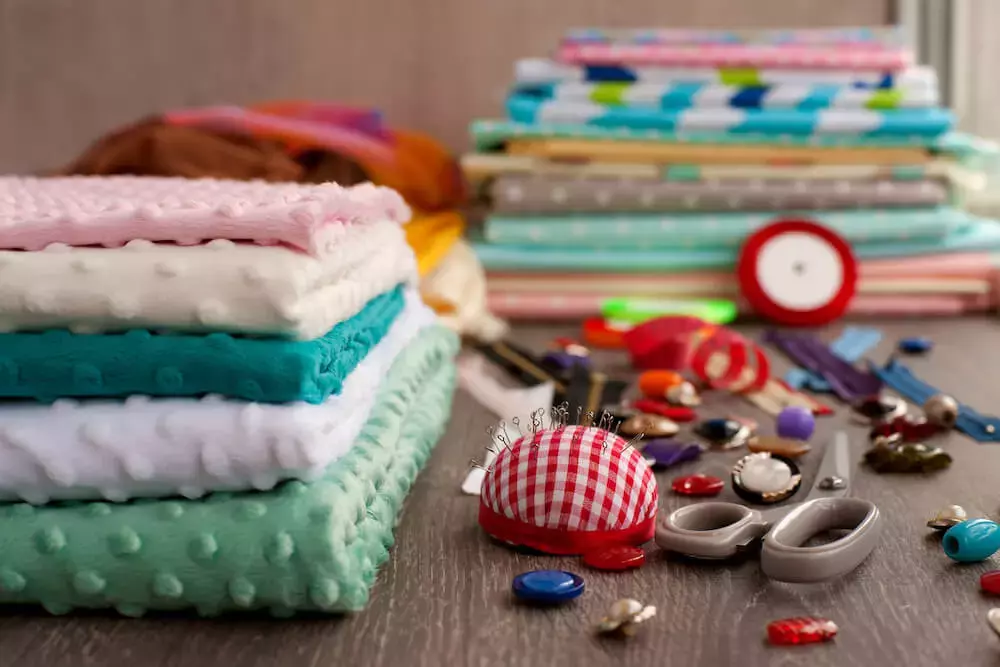Sewing Needles: How to Choose What's Best for Your Project
2023-01-24
As anyone who sews will tell you, not all sewing needles are created equal. There are many different types and sizes of needles, and each one is designed to help you tackle specific types of projects.
As a beginner, deciding which type of needle is right for your project can feel overwhelming — especially given the dozens of different options. This handy guide will explain everything you need to know about sewing needle sizes and when to use each type of needle.
Understanding Sewing Needle Sizes
When you shop for sewing needles in your favorite craft store, you'll notice two numbers on the packaging. For example, you might see 70/10 or 80/12.
The first number is the European size. This number falls between 60 and 110. The second number is the standard American size, and it will fall between 8 and 18.
Needle sizes are determined by width; higher numbers denote thicker needles, while smaller numbers are for thin, fine needles.
Why Is It Important to Have the Right Needle for Your Project?
The type of needle you use for any sewing project is just as important as the fabric, thread, and stitching. Using the wrong needle can damage both your fabric and your needle, so choosing the right one can be the difference between a flawless garment and a hot mess.
Types of Sewing Needles
Most sewing patterns will tell you which type and size of needle to use for the project. However, if your pattern doesn't include this info or if you're creating an original design, it's essential to know the best needles to use for particular fabrics.
Universal Needles
Universal needles are a must-have in any sewing kit. These versatile needles come standard on most sewing machines and are great for woven fabrics, such as cotton and polyester. When in doubt, a universal needle will do in a pinch — as long as your fabric isn't too delicate or too heavy.
Ball Point Needles
The tips of ball point needles are blunter and rounder than those of universal needles. These tips allow ball point needles to slip between fabric fibers rather than piercing them, making them ideal for knit fabrics.
Quilting Needles
Quilting needles are designed to work well with heavier fabrics, such as those used for quilting. These sharp and strong sewing needles can handle many layers of fabric or wadding and still provide even and consistent stitches.
Leather Needles
Leather sewing needles have a unique chiseled, triangular point that sets them apart from other needles and allows them to pierce through thick leather without damaging it. These needles are great for sewing handbags, boots, and other leather projects.
Metafil Needles
Metafil needles boast a larger eye than other sewing needles. This feature makes them great for beginners who struggle to thread a needle. They are also a good go-to whenever you're using metallic thread that is prone to splitting.
Stretch Needles
If your project involves stretchy fabrics such as Lycra or spandex, reach for a stretch needle. These needles have points and eyes designed to prevent skipped stitches in elastic fabrics and create a more polished end result.
Sharps Needles
Sharps needles are sharper and stronger than standard needles, making them ideal for projects with many layers of fabric or wadding. These powerful piercers are a popular choice for quilters but are just as good for tightly woven fabrics like silk and microfiber.
Jeans Needles
Jeans or denim needles have an extra-strong shaft and sharpened point that allow them to effortlessly and cleanly pierce denim and other thick fabrics, such as tweed, canvas, and linen.
Microtex Needles
Microtex sewing needles have a very fine tip that makes them suitable for sewing with coated fabrics and delicate fabrics like silk.
Embroidery Needles
Embroidery needles are mid-size sewing needles ideal for rapid embroidery stitching. These needles have a large eye to accommodate any type of thread and a pontoon scarf to minimize the chance of skipped stitches.
Stock Up On Sewing Needles and Other Sewing Essentials at GoldStar Tool
You can stock up on all of your sewing essentials in one place when you shop at GoldStar Tool. No matter what kind of needle you need for your next sewing project, you can find it here.





